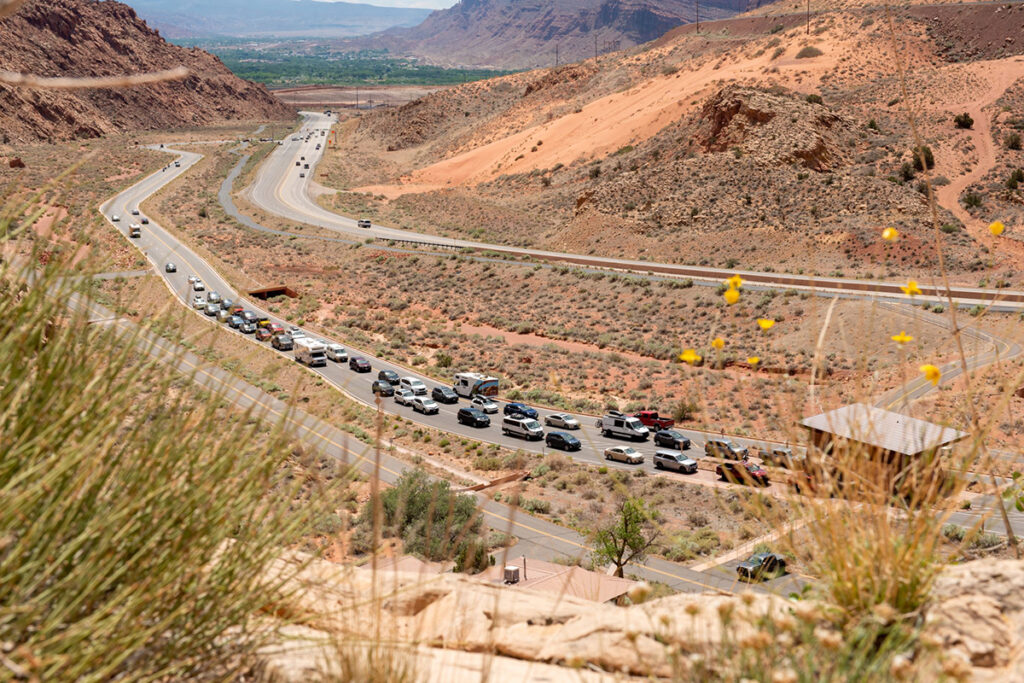EarthTalk®
From the Editors of E – The Environmental Magazine
Dear EarthTalk: Are some of the newfangled entrance restriction tactics to reduce overcrowding at U.S. national parks having the desired effect? — P. Smith, Provo, UT
With each passing day we grow more aware of our environment and its beauty. The U.S. has seen this newfound appreciation in the form of a high influx in visitors to national parks across the country. In the past year, visitors to U.S. national parks have increased by five percent—and since 1976, visitation has increased overall by some 75 percent. In 2022, two of the busiest national parks—Yellowstone and Yosemite—began to require reservations for entry for the first time in the history of the National Park Service (NPS). Increased awareness of our natural world is wonderful, but overcrowding creates detrimental effects, from the songbirds in the trees to the employees at the parking lot.
Environmental luminary John Muir once said, “The mountains are calling and I must go.” And now Americans are heeding this call like never before. To wit, some 312 million trips were made to national parks in the last year, with 12 parks breaking previous attendance numbers. Concentrated in tight weekend windows and school breaks, this trend has overwhelmed these tranquil sanctuaries of nature.
Making matters worse is that national parks weren’t initially developed to accommodate massive crowds. Combine the narrow roads, limited parking and lack of public transport with an impatient mob of visitors waiting to get their share of nature and you come up with a generous serving of chaos.
Yosemite National Park’s experimentation with requiring reservations in order to pass through the gates did help reduce Yosemite’s notorious overcrowding as much as rangers didn’t like turning people away. Zion National Park now disallows cars beyond the visitor center parking lot just inside the park gates. Visitors instead now rely on an efficient shuttle bus system which moves everyone right along between stops and hiking trailheads throughout the park’s main artery. Zion also offers visitors options like renting e-bikes and e-scooters for those who would rather skip the shuttle bus.
Arches National Park has implemented a timed-entry program that may be the secret sauce to figuring out overcrowding. Through the first three months of 2023, visitor numbers were down when compared to the two previous years. Innovative solutions like driverless shuttles and other sustainable technologies will only improve with time. It’s been a long journey for our parks over the last few years, but rays of optimism shine through the trees. While our parks aren’t exactly back to their peaceful, serene states yet, they sure are on the right trail back.
CONTACTS: Arches National Park may have found a magic bullet for overcrowding. Could it work at other parks? sltrib.com/sports/2023/05/07/arches-national-park-visitors-will/; A Visit to the National Park of the Future: Innovative transportation and emerging mobility to maximize sustainability and visitor experience, nps.gov/articles/000/a-visit-to-the-national-park-of-the-future-innovative-transportation-and-emerging-mobility-to-maximize-sustainability-and-visitor-experience.htm.
EarthTalk® is produced by Roddy Scheer & Doug Moss for the 501(c)3 nonprofit EarthTalk. See more at https://emagazine.com. To donate, visit https://earthtalk.org. Send questions to: question@earthtalk.org.
Viewers are encouraged to subscribe and join the conversation for more insightful commentary and to support progressive messages. Together, we can populate the internet with progressive messages that represent the true aspirations of most Americans.

